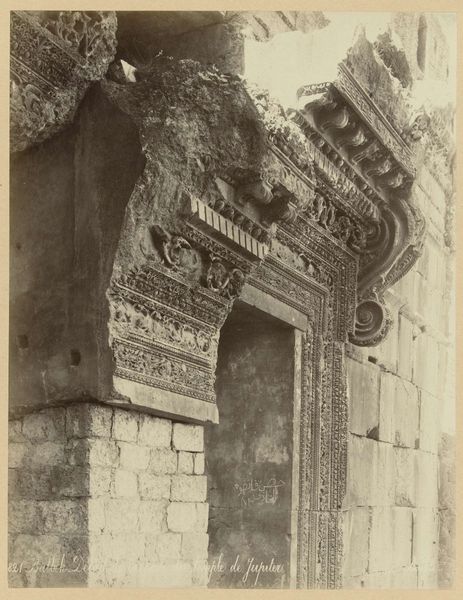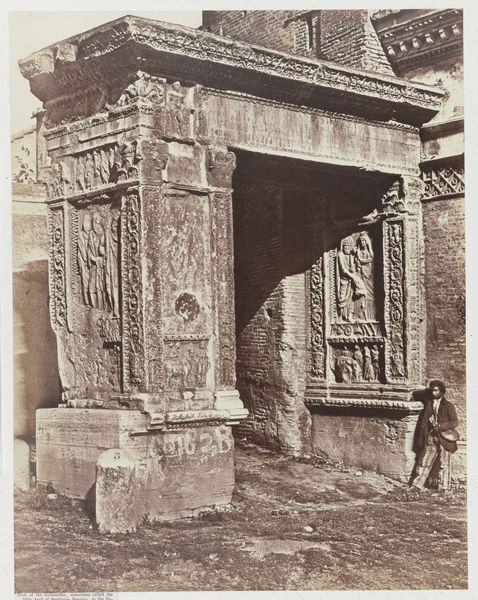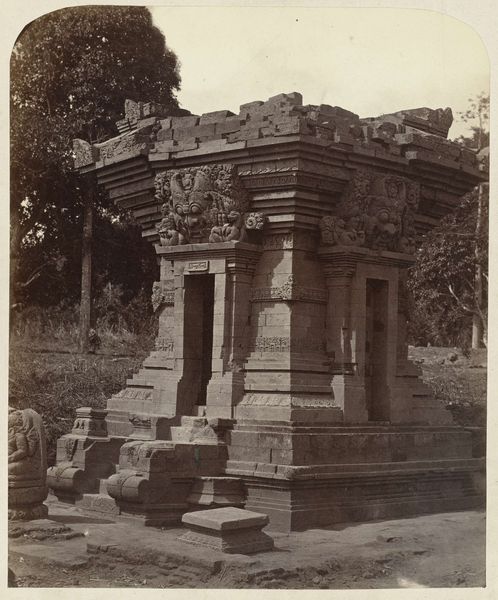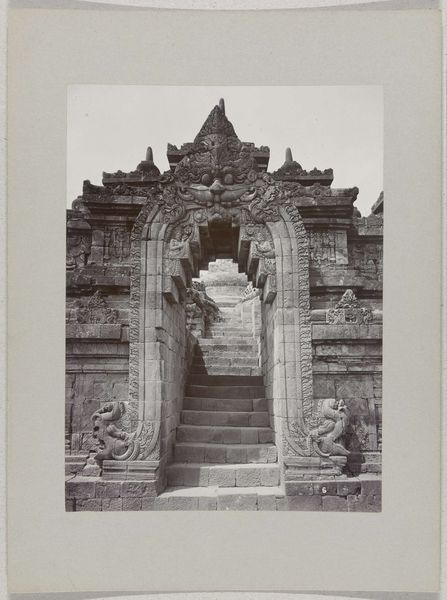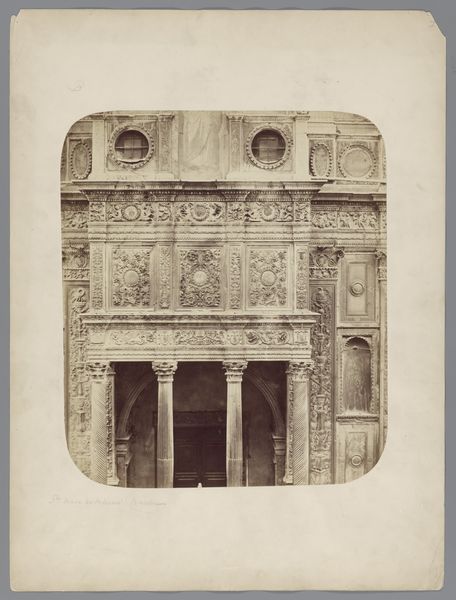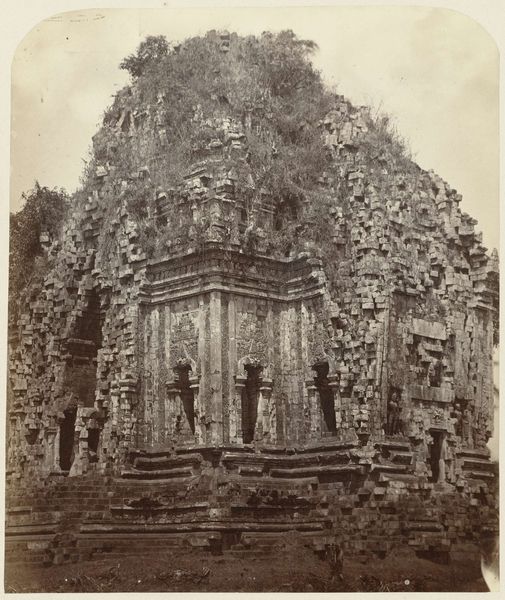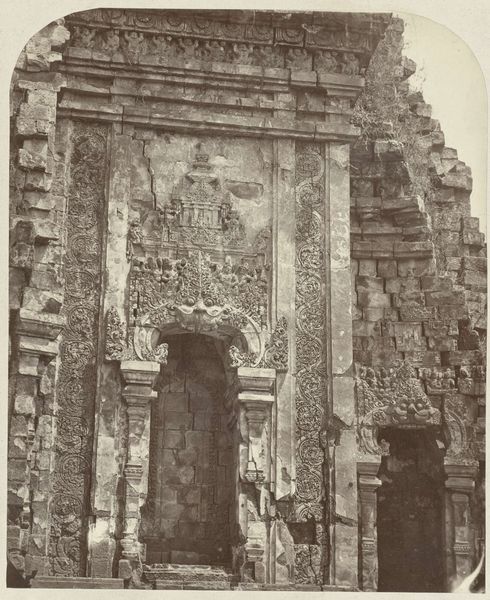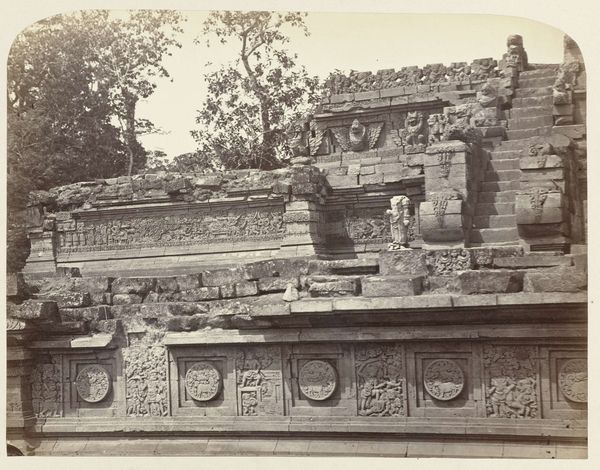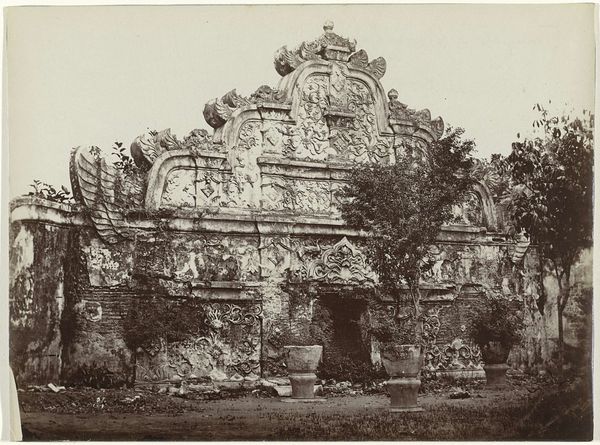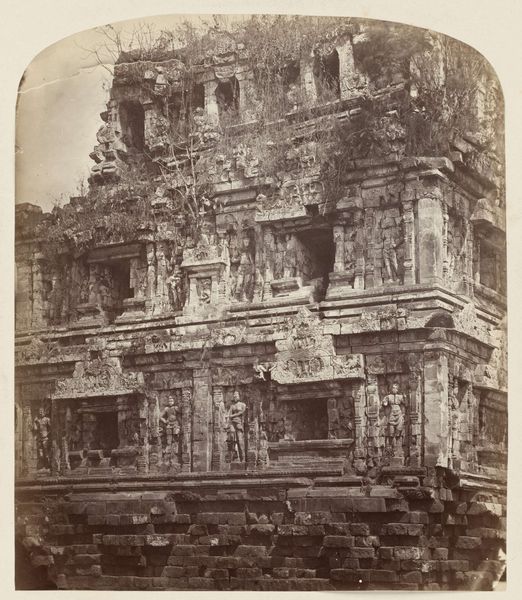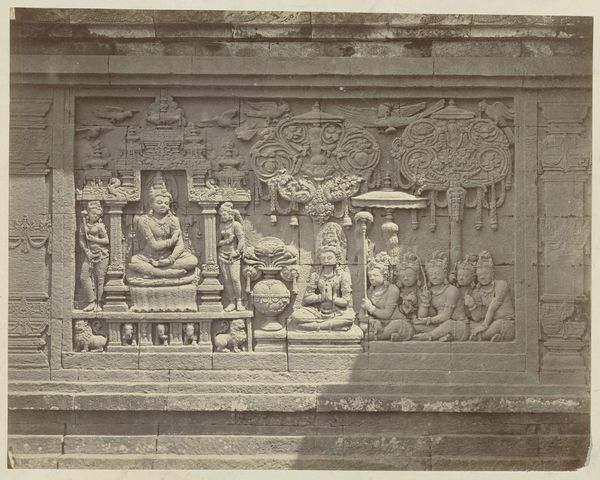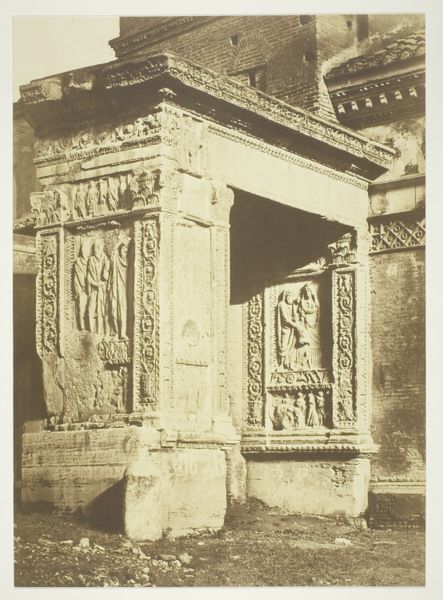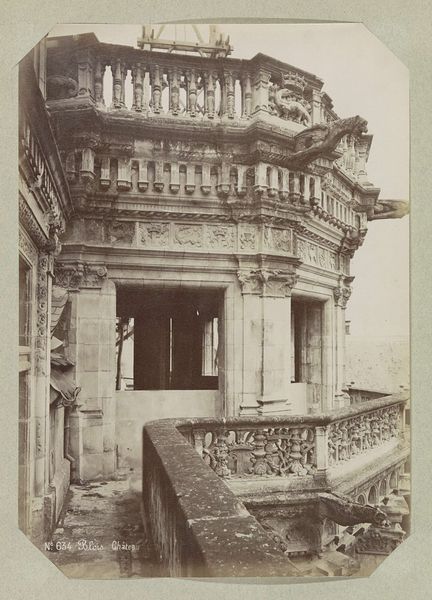
Candi Puntadewa, details of the decorated niche, probably on the north side. Dieng plateau Wonosobo district, Central Java province, 8th-9th century Possibly 1864 - 1867
0:00
0:00
carving, relief, photography, collotype, architecture
#
carving
#
asian-art
#
relief
#
landscape
#
indigenism
#
photography
#
collotype
#
ancient-mediterranean
#
19th century
#
islamic-art
#
architecture
Dimensions: height 340 mm, width 290 mm
Copyright: Rijks Museum: Open Domain
Curator: Looking at this collotype print, I find myself drawn to the photograph itself, aside from the carved niche it depicts. Editor: Absolutely. It feels almost haunting. There's a weight of time visible in the texture of the print, and a profound sense of stillness emanating from the image of the temple carving. Curator: This piece captures details of the decorated niche of Candi Puntadewa, likely on the north side of the structure. The photographer, Isidore Kinsbergen, framed this image of the Dieng Plateau, in Central Java province. These photographic surveys took place likely in the 1860s. Editor: Notice the fierce face carved above the niche’s doorway? This symbol, found frequently in Southeast Asian temples, protects the sacred space. Below, scrolling tendrils of leaves create patterns and further enhance the sense of nature’s powerful and enveloping presence, not to mention, a reminder of the incredible handwork from the builders. Curator: The colonial context is difficult to ignore here. Kinsbergen, a Dutch photographer, was meticulously documenting these ancient sites. Editor: What about the symbolism resonates for you from this image? Curator: Seeing it archived and treated as scientific record rather than as a place of worship. The history of documentation and collecting in this era feels problematic in hindsight. The archive and museum become tools to demonstrate the "riches" seized during colonial occupations. Editor: Yet, there’s undeniable artistry here, both by the Javanese sculptors and by Kinsbergen himself. I mean, just look at the play of light on the stone—the textures he's able to capture in this collotype print. Curator: Yes, the photograph certainly bears a haunting beauty; however, these images often mask or perhaps overwrite local histories, essentially reducing cultural sites into objects for scientific observation, fitting them into a western way of understanding art and history. Editor: You are correct, these nuances in the historical context, alongside the artistry, deepen our understanding of this powerful image, giving way to broader understandings of cultural legacy and perhaps what images might stand for in the future.
Comments
No comments
Be the first to comment and join the conversation on the ultimate creative platform.
